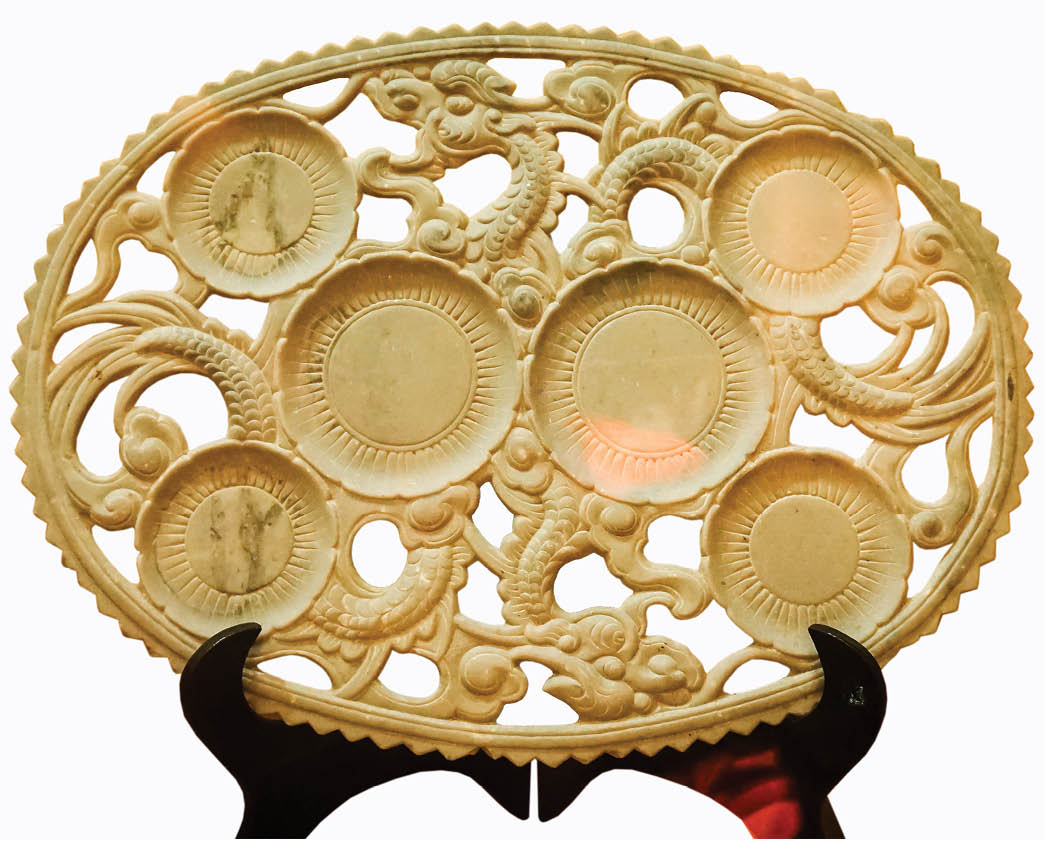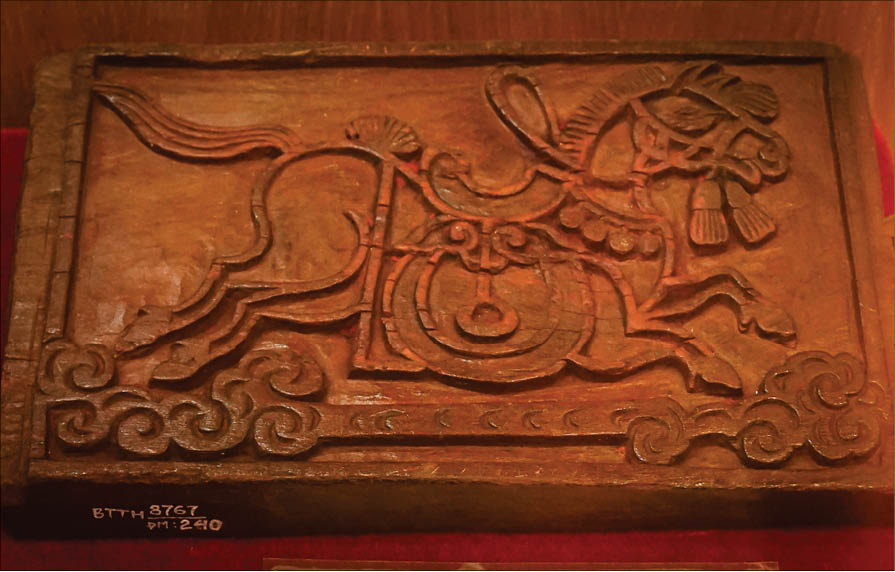
Marble tray in the theme of "Two Dragons Hidden in Clouds"
Artifacts of the Nguyen Dynasty on display at the museum are diverse in category, ranging from old books (King's honor for Dong Co Temple in My Da Village, Hoang Minh Commune, Hoang Hoa District on May 25, 1824, (the 5th year of Minh Mang's times) to the collection of household objects such as plates, jars, wine bottles, pots, vases, incense burners made of china and bronze, printing woodblocks, objects of worship and bronze cannons dating back to the 18th-19th centuries. Some of them are very noteworthy.
First of all, there is a pretty exquisite horse printing woodblock. The woodblock with a protruding handle is very typical of Sinh-Village folk paintings in Hue in the early 20th century. The horse on this woodblock is depicted as running, different from the popular image of flying horse or standing horse on the woodblocks owned by the artisan Ky Huu Phuoc. This horse is also very different from the "white horse god" of the Nguyen Dynasty, often mentioned by researchers in Hue culture. The horse is fully portrayed with harness and bells. The carving details are deep, bold and strong. Under the four paws is the clouds, creating the image of the god-like horse riding and flying in clouds.

Bronze tray in the theme of "Five Happiness"
Compared with the printing woodblocks currently kept by Ky Huu Phuoc, this horse looks more sophisticated; especially the mane is meticulously carved, unlike the simplicity often found in Sinh-Village paintings. This is the printing woodblock of a painting for worship of Sinh Village in the Nguyen Dynasty's times, older than many other woodblocks in the village and similar to the one on display at Vietnam Museum of Arts. It hence can be concluded that Sinh-Village woodblocks have become less and less complicated over time. This conclusion contributes to a more comprehensive view at the values of old Sinh-Village paintings.
The second item is a marble tray, oval in shape. In the middle is the carving of "two dragons hidden in clouds". This artifact shows admirable craftsmanship, especially the two dragons intermingled with places for cups in shape of apricot blossom in a harmonious and well-proportioned manner. The art of embossment and cutting on stone reached a high level, which can be seen through the diversity in depth, size and direction. The waving clouds, the scales on the dragon and the petals are carved so carefully that not a single minor fault can be detected. This artifact shows the craftsmanship of artisans in the Nguyen Dynasty's times in making household objects.
Many bronze trays are displayed at the museum but the most noteworthy is the one in the Nguyen Dynasty's times, decorated in the theme of "Five Happiness." The tray recalls the story in 1627 when Lord Trinh wanted the Nguyen in the Cochinchina to submit to him. He sent a messenger bringing an honor to Nguyen Phuc Nguyen and asked for tributes. In response, Dao Duy Tu, with the consent of the Nguyen Lord, had a tray with a two-layered bottom made and hid in it the honor itself and a card with 4 sentences on it. The four sentences combined meant "Du bat thu sac" ("I refuse to receive the honor.") Upon discovering, Lord Trinh got furious and the Trinh-Nguyen Conflict started.

Horse printing woodblock
Story and photos: PHAM MINH HAI
